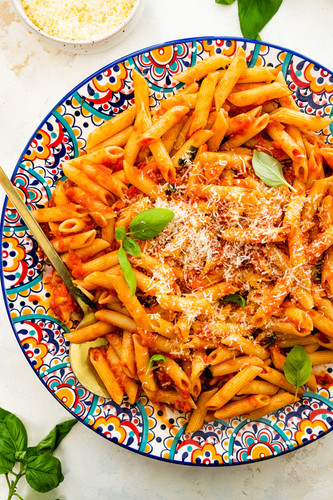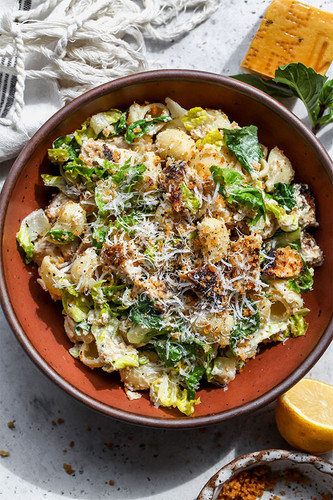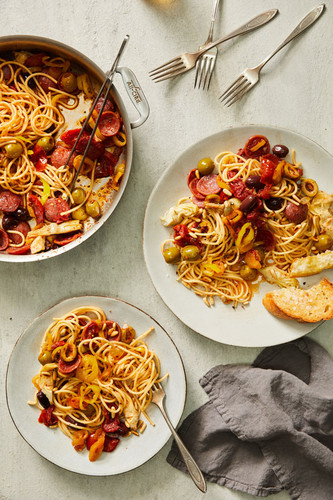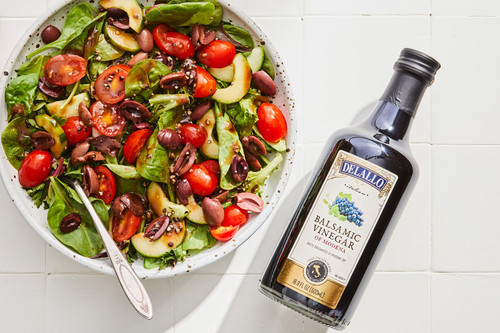Blog
Penne Pomodoro
Craving a comforting, no-fuss pasta dish that still tastes like it came straight from Nonna’s kitchen? Say hello to Penne Pomodoro from @cucinabyelena. With its simple ingredients and bold flavo
Read More »pasta
Spotlight Series: All About Biscotti
SHOP BISCOTTI SHOP ITALIAN DESSERTS 13 CLASSIC DESSERT RECIPES SHOP ESPRESSO POWDER SHOP BISCOTTI SHOP DESSERTS 13 CLASSIC DESSERT RECIPES SHOP ITAL
Read More »ingredient guides
Burrata Artichoke Bruschetta Dip
Get ready to meet your new favorite appetizer! This Burrata Bruschetta Dip from @healthyishfoods is a creamy, dreamy twist on a classic crowd-pleaser. Think rich, velvety burrata cheese blended with t
Read More »antipasti and appetizers
Chicken Meatballs with Orzo
Looking for a cozy, crave-worthy dish that hits all the right notes? This Chicken Meatballs with Orzo from @foodbymaria is your new weeknight favorite! Juicy, flavorful chicken meatballs are paired wi
Read More »baked pasta
Pesto Caesar Pasta Salad
Craving something fresh, flavorful, and a little unexpected? Say hello to your new favorite dish: Pesto Caesar Pasta Salad! This vibrant twist on a classic from @dishingouthealth combines the bold, ga
Read More »pasta salad
Antipasto Pasta
A pasta dish that deserves a few exclamation points!!! This antipasto-salad-inspired recipe is all about the flavor, loaded up with pepperoni, olives, artichokes, zesty pickled pepper rings and smoky
Read More »dinner ideas
4 Impressive Mother’s Day Brunch Menus
4 Impressive Mother's Day Brunch Menus Treat Mom with Something Sweet If you’re looking for a way to show mom your appreciation, say it with sweets. From fresh berries and balsamic
Read More »blogs
Spotlight Series: All About Semolina Flour
If you've ever enjoyed a steaming bowl of creamy pasta, a slice of hearty bread, or a sweet, syrupy dessert like the beloved baklava, then you've experienced the magic of semolina. But exactly what is
Read More »Ingredient Guides
Spotlight Series: All About Balsamic Vinegar
SHOP DELALLO VINEGAR BALSAMIC VINEGAR RECIPES CREAMY BALSAMIC DRESSING GOLDEN BALSAMIC VINAIGRETTE Spotlight Series: All About Balsamic Vinegar If there’s o
Read More »blogs
Orecchiette with Sausage and Peas
Looking for a cozy, crowd-pleasing pasta dish that’s bursting with flavor? Say hello to orecchiette with sausage and peas from @healthyishfoods This hearty Italian classic combines tender &ldquo
Read More »Pasta
4-Ingredient Cacio e Pepe (A True Classic!)
4-Ingredient Cacio e Pepe (A True Classic!) Ever tried the classic Italian dish Cacio e Pepe? It’s a simple yet incredibly satisfying meal that's perfect for those days when you wa
Read More »classic italian













